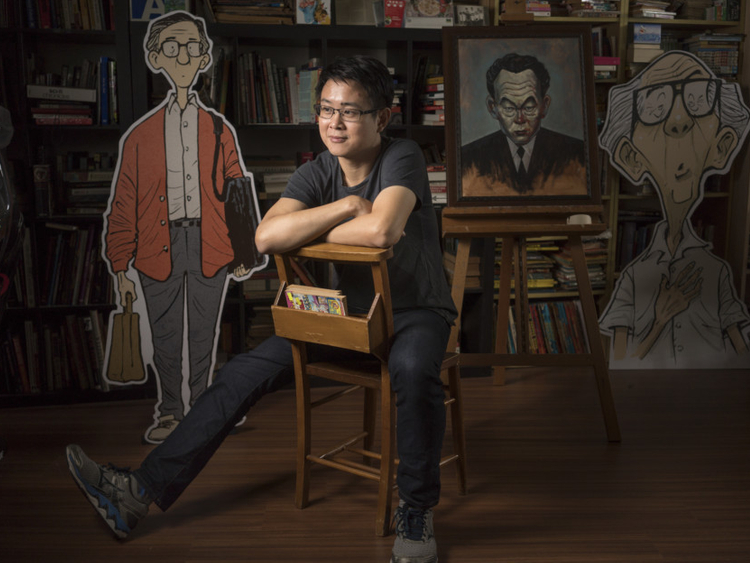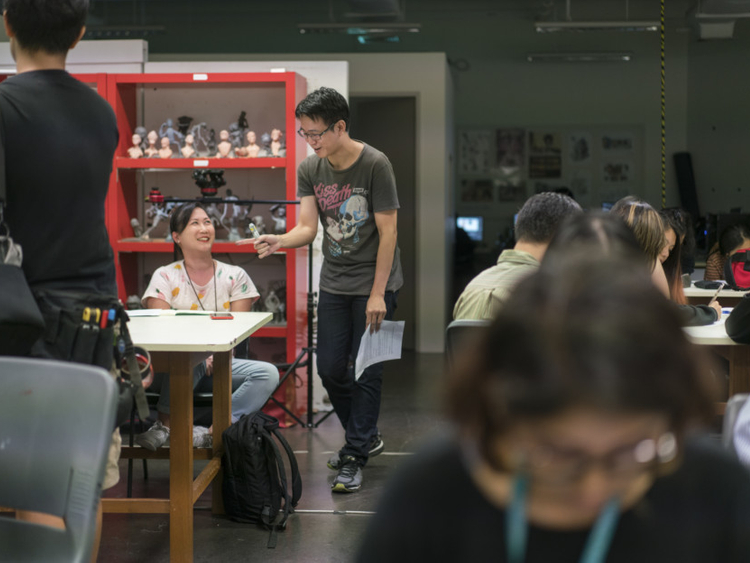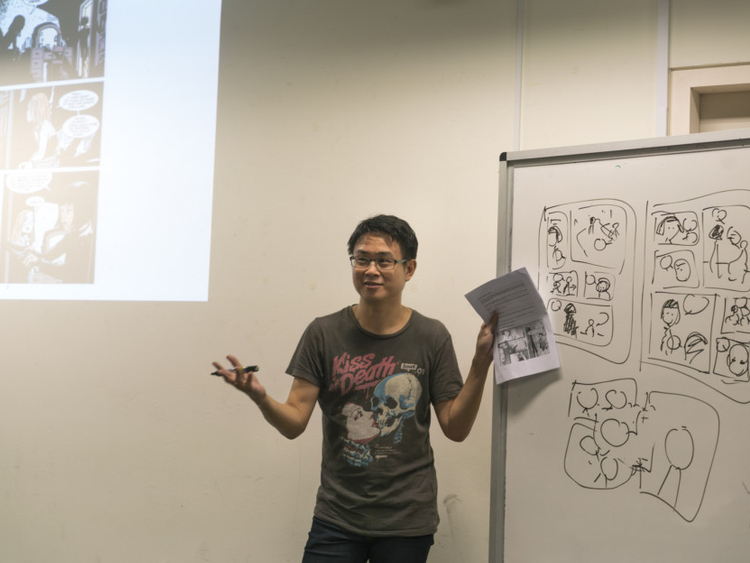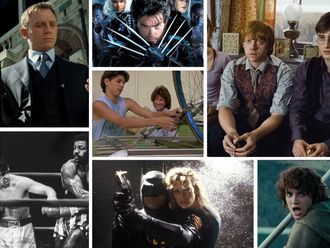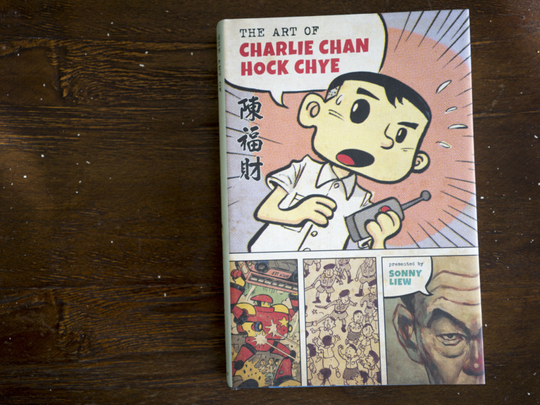
SINGAPORE: For half a century, Singapore’s creation story has been one of tough love.
It goes something like this: Newly independent from its bigger neighbour Malaysia, small and vulnerable in the middle of the Cold War, beset by communist infiltrators and surrounded by domino nations, Singapore finally found stability and a road to prosperity when its founding father, Lee Kuan Yew, defeated dangerous left-wing opponents, regrettably by having many tossed into jail.
This young nation’s narrative has been hammered home in textbooks, the mass media and television shows. To oppose it meant risking detention without trial, costly libel suits or extreme marginalisation in a country where the state controls most purse strings and levers of power.
But this monolithic view of the past has begun to change, thanks in part to a soft-spoken artist and his comic book cast of robots, aliens and cockroaches.
‘The Art of Charlie Chan Hock Chye’ tells the story of Singapore’s greatest cartoonist, the book’s namesake, who grew up after the war when the colonies of British Malaya and Singapore were agitating for independence. Charlie Chan documents that era of riots and protests in a series of vignettes, each one paying homage to some of the world’s comic book artists — and along the way challenging myths and rescuing from anonymity people written out of the official version.
What slowly becomes apparent is that Charlie Chan is fictional, maybe not even that famous, and the person “presenting” his work, Sonny Liew, is the real artist. But what isn’t fictional is the history that Liew presents — and the sensation that his book has caused. Since being published two years ago, Liew’s book has gone through multiple print runs and become central to a slow-burning national discussion over this country’s history, culture and values.
“When people ask me about Singapore and politics, I tell them I’m just a cartoonist,” Liew said in an interview. “My book is meant to offer a more inclusive vision of Singapore’s history, one that encourages readers to look at all narratives with a critical eye.”
That low-key, factual attitude probably accounts for the book’s success in a country that rarely looks favourably on challenges to government orthodoxy. After the book was published in 2015, Singapore’s National Arts Council withdrew a publishing grant, and an official wrote in a letter to a local newspaper that the book “potentially undermines the authority and legitimacy of the government and its public institutions”.
But overall, the reaction has been mild. Liew still enjoys a subsidised studio, participates in government-supported festivals, won a major national literature prize and receives wide exposure in the state-controlled media — signs of a slow but profound relaxation taking place.
Government is yielding
“If you look at Singapore today, we’re far from where we were 20 or 30 years ago,” said P.J. Thum, a Singaporean historian who has often challenged official histories. “People are seizing more agency for themselves and the government is yielding.”
Thum, for example, has his own alternative history podcast for Singapore and has been mining declassified British archives to challenge the story that Singapore faced a credible communist threat. Others are engaged in historic preservation efforts that in the past would have been ignored.
Some engage in protests; last month, protesters wearing blindfolds staged a silent demonstration on a subway line to commemorate the 30th anniversary of a police roundup of 22 people accused of membership in a Marxist conspiracy. And most recently, in mid-June, some members of the Lee family have begun to criticise their state’s authoritarian rule.
Like many Singaporeans, Liew’s questioning is circumspect. He does not directly challenge what the government calls “The Singapore Story” — an upbeat tale of success made possible by Lee’s firm hand.
Instead, he subtly lets the alternative histories unfold, mirroring his main character’s experimentation with new genres. The result is a kaleidoscope of art that pays tribute to Osamu Tezuka’s Astro Boy, Walt Kelly’s Pogo and Steve Ditko’s Spider-Man. Liew adds to the sense of a reimagined past by tossing in watercolour sketches of destroyed sections of the old city, oil portraits of the main characters, and old photos.
At its heart, the story revolves around two men: Lee, the country’s founder and long-serving prime minister, who died in 2015 at age 91, and Lim Chin Siong, a left-wing trade union leader whose spellbinding speeches helped convince many Singaporeans that they could become independent from Britain.
Lim spent two stints in jail, from 1956 to 1959, under British rule, and from 1963 to 1969, when the newly independent country under Lee arrested left-wing organisers. He was held in solitary confinement, his health deteriorated and he tried to commit suicide. He died in 1996, aged 62.
Today, Lim plays little role in Singapore’s official history, but in Liew’s book, he is a central figure who could easily have been prime minister. Liew also explores charges that Lim advocated violence, using newly declassified British documents to come down fairly convincingly on the side of Lim’s being framed.
The book’s structure also gives Liew the backstage role he prefers. In life, he is as self-effacing as the humble Charlie Chan: quiet and soft-spoken, with a boyish grin, a mop of hair and a runner’s physique.
His studio is more revealing. Located in what was once a high school and later an arts school that has been converted into artist workshops, his studio is a chaotic maze of kitschy toys, cutouts of main figures in graphic stories and shelves of weighty books. In some ways, they stand out the most in the cluttered room, underscoring a depth of intellectual engagement.
Fascinated by Singapore’s history
Born in Malaysia, Liew moved to Singapore when he was five years old. He began drawing comic strips as a teenager and later went to the Rhode Island School of Design (in the US}. He worked for a computer gaming company in Boston but had to make a choice: find a steady job that would yield a work visa and the path to a green card, or stick with the piecemeal work of a comic book illustrator.
He chose the latter and moved back to Singapore. With time, his talent won him contracts with international comic book companies like Marvel and DC.
What began to fascinate him, however, was Singapore’s history. Liew wondered why he had heard so little about Lim, the union leader. The past seemed so dim. He decided to explore.
“I’m trying to make history more inclusive rather than championing a competing version,” he said. “The Singapore Story is part of the truth, but if you leave out the alternative histories, it’s a less accurate picture.”
When he began his research, he realised that accuracy was crucial. Mistakes would open him up to criticism and perhaps even libel suits.
“To an extent it’s a good thing,” he said. “You have to make sure that what you’re saying is factually accurate, or at least relies on the available historical evidence.”
The book became a quick success. Helped in part by publicity over the government’s decision to pull the grant, the initial print run of 1,000 copies quickly sold out, and now over 15,000 are in print in Singapore — a country of 5.6 million people. Last year, the book was published in the United States, with translations also in French and Spanish.
That popularity is evident whenever Liew makes public appearances.
At one of them, a young fan, John Chow Yan Ping, an 18-year-old majoring in applied drama and psychology at Singapore Polytechnic, said the book was part of a mini-revolution in his own family. His mother, a high schoolteacher in a public school, is using ‘The Art of Charlie Chan’ in a mandatory course in moral education.
As for himself, Chow said the book taught him how another milestone in the country’s history — the 1964 referendum on independence from Malaysia — was probably rigged to get a positive outcome.
“If you read any country’s history textbook, you get different angles on things, but in Singapore, they have to align with the government’s interests,” Chow said. “This book shows something that doesn’t align with it, and that’s something new.”
— New York Times News Service



